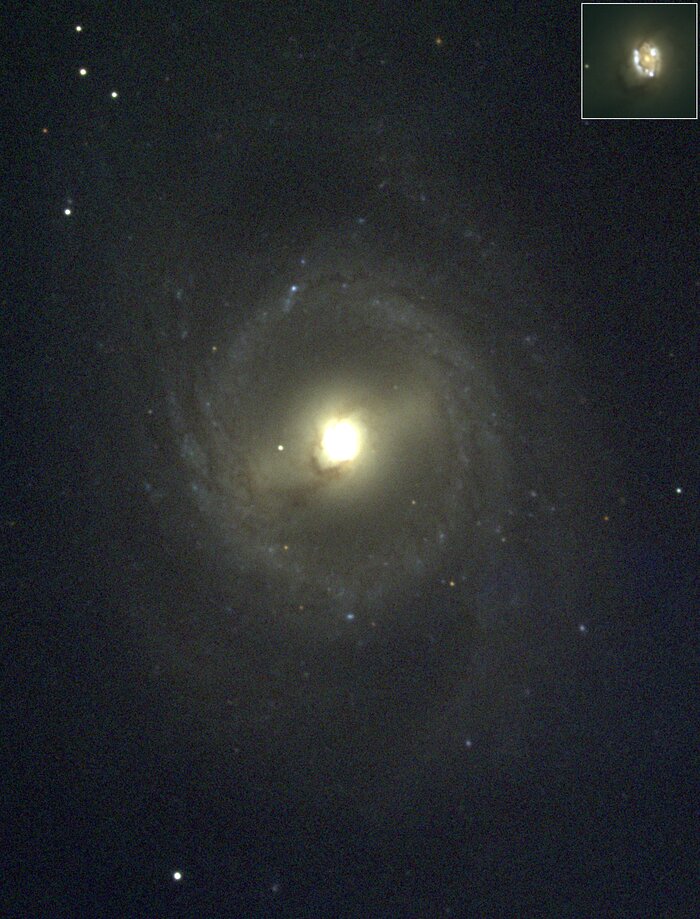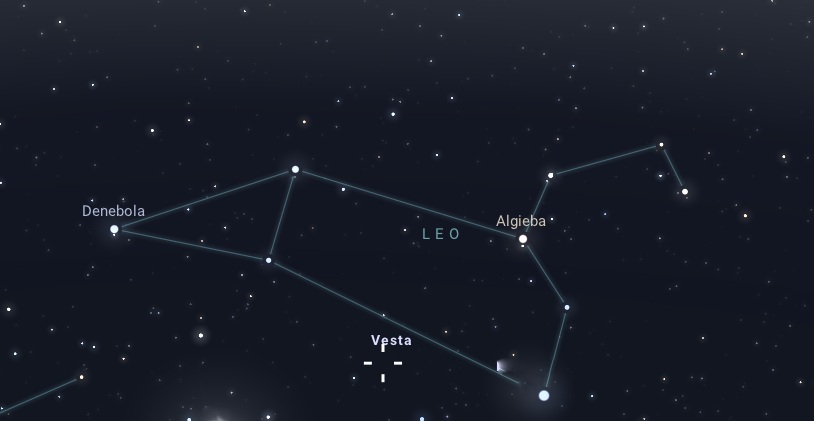M95, also known as NGC 3351, is a barred spiral galaxy located in the constellation Leo. It is a fascinating object for astronomers and amateur stargazers alike. Here’a some interesting facts about the galaxy:
Discovery and Classification
M95 was discovered by the French astronomer Pierre Méchain on March 20, 1781. It was later cataloged by Charles Messier on March 24 of the same year as part of his famous list of nebulae and star clusters, now known as the Messier Catalog.
M95 is classified as a barred spiral galaxy, denoted by the classification SB(r)b in the Hubble sequence, indicating a prominent central bar structure and moderately tightly wound spiral arms.

Physical Characteristics
M95 lies approximately 33 million light-years from Earth. The galaxy has a diameter of about 70,000 light-years, making it roughly two-thirds the size of the Milky Way. The central bar of M95 spans around 20,000 light-years. The galaxy’s overall structure is characterized by a bright core, a prominent bar, and spiral arms that extend outward from the ends of the bar. These arms are rich in star-forming regions, filled with young, hot stars, and interstellar gas and dust.
M95 in the Local Group and Leo I Group
M95 is a member of the Leo I Group of galaxies, which also includes M96 and M105. This group is part of the larger Virgo Supercluster, which encompasses the Local Group, containing the Milky Way, Andromeda, and their satellite galaxies. The interactions between galaxies in the Leo I Group, including tidal forces and gravitational influences, play a significant role in their evolution and structure.
Research and Scientific Importance
M95 is of particular interest to astronomers studying galaxy formation and evolution. Its barred structure provides insights into the dynamics of spiral galaxies and the role of bars in funneling gas toward the central regions, triggering star formation. Observations of M95 across different wavelengths, from radio to X-rays, help scientists understand the distribution of stars, gas, and dark matter within the galaxy.
Supernova Event
One of the most notable events in the galaxy’s recent history is the detection of a supernova, designated SN 2012aw. This Type II supernova was discovered on March 16, 2012, and reached a peak magnitude of 13. The event provided astronomers with valuable data on the life cycles of massive stars and the dynamics of supernova explosions in barred spiral galaxies.
Observation
For amateur astronomers looking to observe M95, it is best viewed during the spring months, namely, March to May, when the constellation Leo is high in the night sky. To locate it, look for the distinctive shape of Leo, which resembles a crouching lion. The brightest star in Leo is Regulus, located at the lion’s heart (at the bottom of the sickle asterism). Move from Regulus to the second-brightest star in Leo, Denebola, which marks the tail of the lion (on the others side). Locate the stars, Chertan (Theta Leonis) and 53 Leonis that form part of the lion’s hindquarters, roughly between Regulus and Denebola. From Chertan, move approximately 10 degrees southeast to find 53 Leonis. M95 is situated about 1.5 degrees west of 53 Leonis.

When observed through a telescope, M95 appears as a faint, fuzzy patch of light with a bright central region. Its spiral structure can be discerned with larger amateur telescopes, especially under dark skies. The bar and ring-like structure around the nucleus are particularly noteworthy. The galaxy has an apparent magnitude of 10.4, making it a challenging target for small telescopes but a rewarding object for larger ones. Detailed observation requires good seeing conditions and a telescope with a diameter of at least 8 inches (20 cm).



